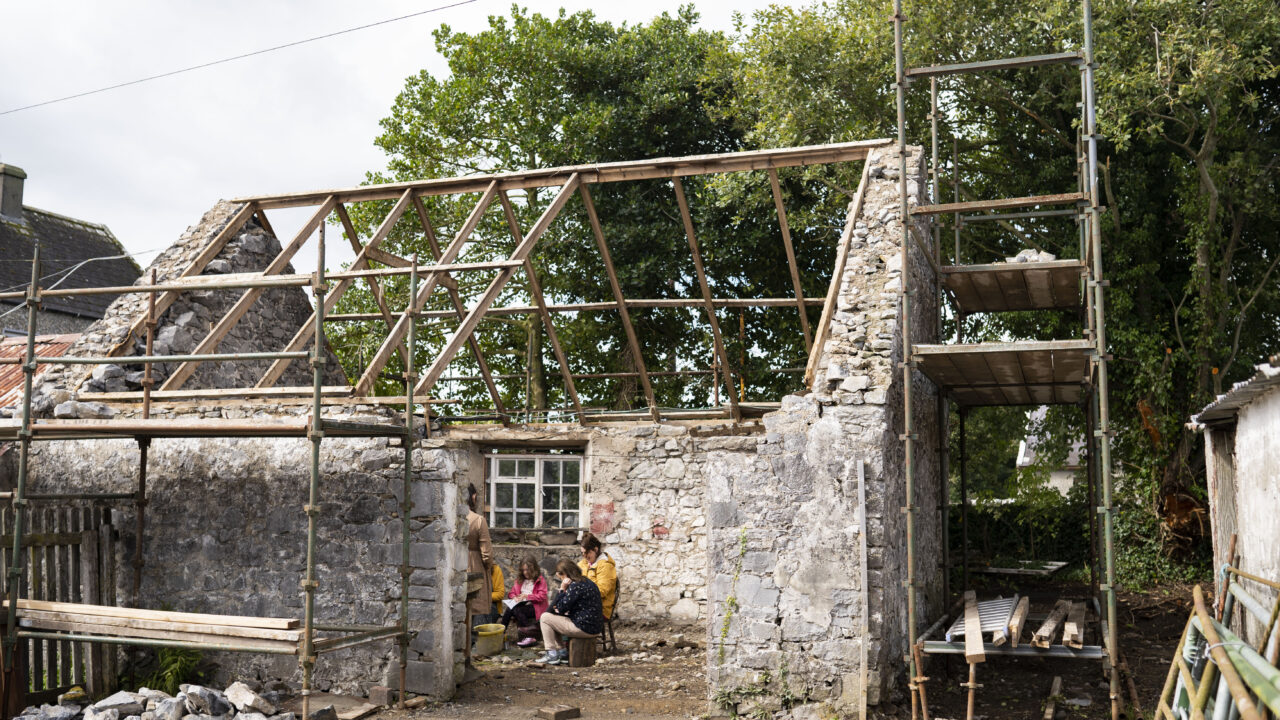Graine Nature Farm in Urlingford, Co. Tipperary, recently saw the repair of an old workshop and cow sheds under the Traditional Farm Buildings Grant Scheme, which is managed by the Heritage Council in partnership with the Department of Agriculture, Food and the Marine (DAFM).
The farm is ran by Richard Brennan and his daughter, Maura.
`’Our project saw the old workshop and cow sheds repaired and restored under the guidance of conservation architect, Fintan Dunne. My dad, Richard (Richie) Brennan ,who has over 50 years experience as a builder and carpenter, completed the work himself. He was supported by skilled carpenter Paul Regan, who has worked with him for almost 30 years.
“Also helping on the job, was Richard’s grandnephew, Cormac Burke, and myself,” said Maura who is founder of the Acorn project, a community seedsaving and nature education project.
“The old stone workshop dates back to the 1800s, and is listed on the 1901 census. It originally had a thatch roof, which was replaced with galvanise in the 1950s. It was used as a barn, and later a workshop by Richard’s father, Dick Brennan, who was a farmer and carpenter,” said Maura.
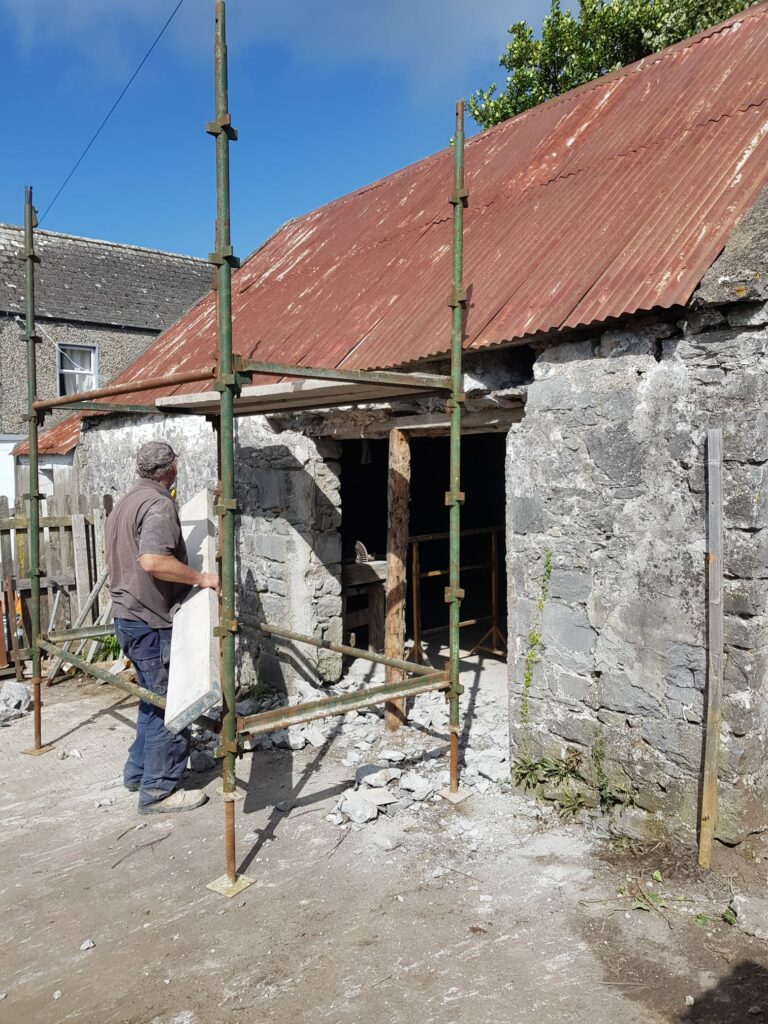
“Currently the land is managed for biodiversity with meadow restoration projects, and we also host the Acorn project tree nursery. We are third generation beekeepers producing honey,” said Maura who processes the honey and beeswax to create a range of herbal remedies combined with wild foraged plants.
In July, Gerard Tobin visited the farm to complete a bird and bat survey for the work being done on the workshops and cow sheds.
“It was really interesting to learn about the nocturnal bats and birds present in our farmyard and adjoining lands. Gerard shared maps of the bats, and helped us to understand how we could maximise conditions for birds and bats. He also helped us identify spots for bat boxes and owl boxes,” said Maura.
“Once the swallows had left, and we were sure that there were no bats dwelling in the shed, work could begin. In the old workshop, the roof and rafters were repaired, and where possible, we used reclaimed materials. The lentel over the back door was replaced using a reclaimed wooden beam from Urlingford courthouse,” she said.
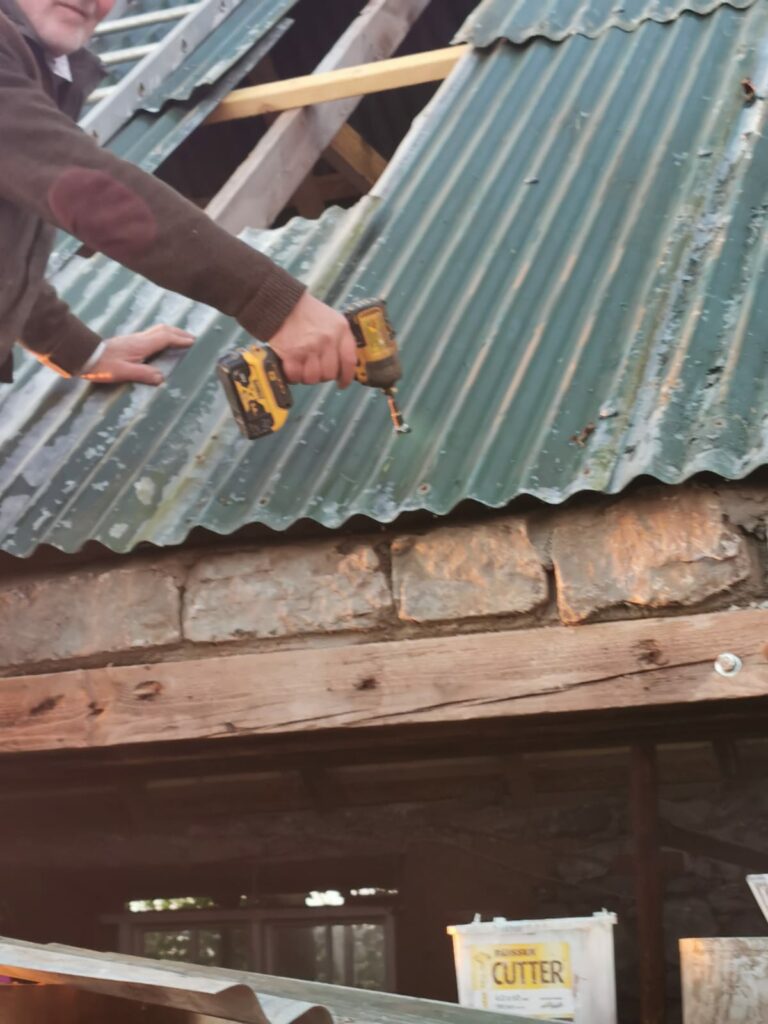
The ethos of using reclaimed materials was much aligned with Richard’s own practice of reclaiming and reusing materials. The floor of the workshop was repaired as well, with a traditional limecrete floor. Along the way, some damage revealed itself on that back wall, which needed structural repair.
“We sourced our lime from the Traditional Lime Company, Co. Carlow, who offered generous guidance and expertise. The limecrete floor was tougher work to lay than a concrete floor, but the results were worth it.
“The project was an opportunity to celebrate and value the many skills that the workshop has been home to over the generations, from beekeeping to sign writing to tanning sheep skins,” Maura said.
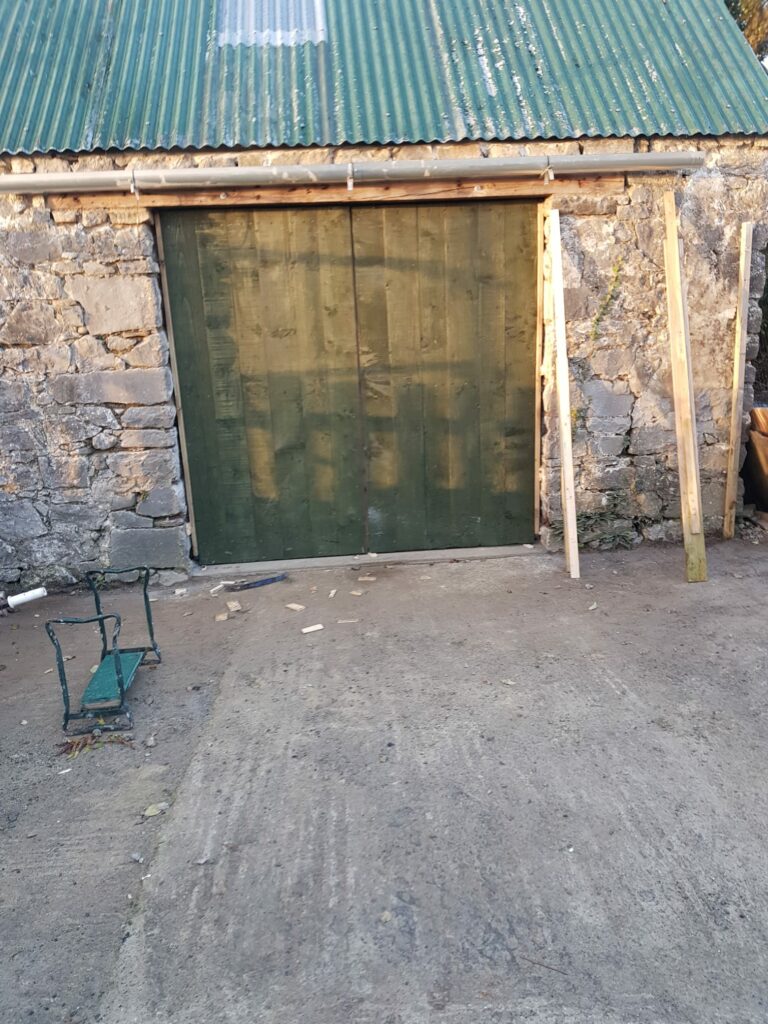
“The work benches and lathe used by my grandfather are still present. We found templates for shop front signs crafted by Dick Brennan, and of these signs is still present in Freshford today, over O’Shea’s shop,” said the north Kilkenny woman.
“However, the most interesting story we unfolded in the process of the project was attached to an unidentified piece of equipment. When Richard consulted with older brothers, John and Willy, it transpired that it was used for scoring the felloes of cartwheels to mark the spokes.
“A little bit of further research, and we discovered that my grandad, Dick Brennan, had served his time as a wheelwright, and had fabricated cartwheels in the workshop with a little forge out back. As cartwheels went out of use, he worked more as a carpenter and builder.
“It was interesting for Richie to get the opportunity to use traditional materials and to revisit materials that he would have used early in his career. The vision that we hold for the workshop, is that it will become a space in which traditional skills will be relearned. We have a series of workshops scheduled for 2024 in woodworking, basketmaking, tool repurposing, scything and more,” Maura outlined.
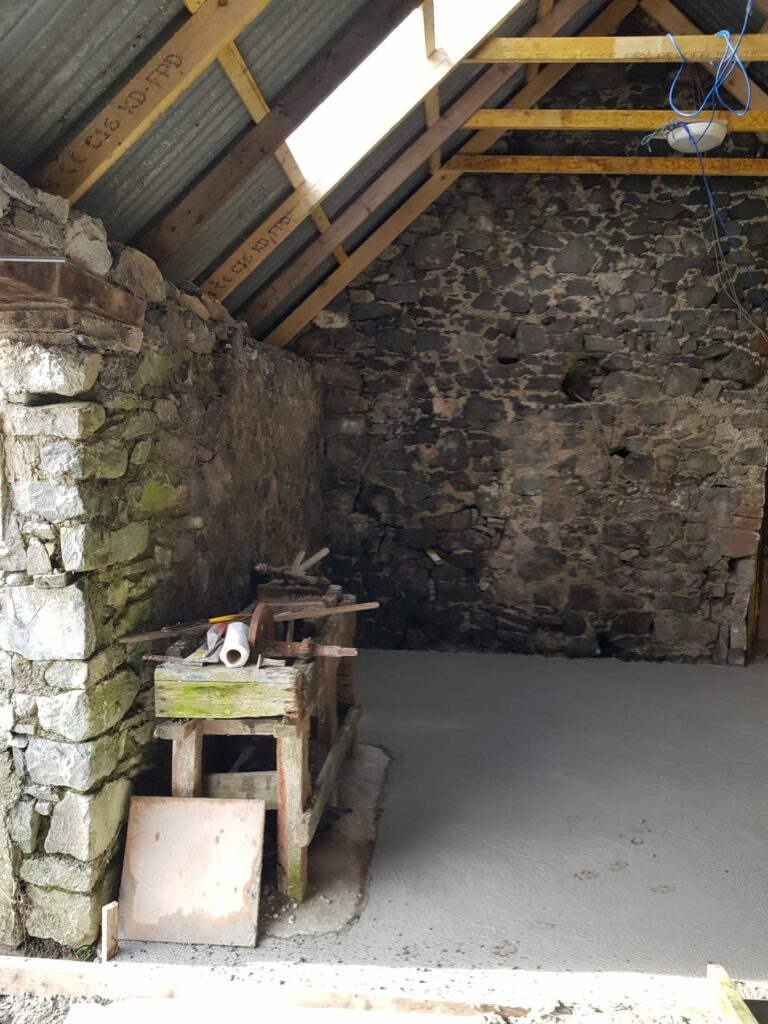
The old workshop building will host a community seed saving project, which focuses on valuing local provenance tree seeds from the Nore catchment.
The workshop will also host the ‘Song of the Scythe’ tool library and biodiversity recording kit, which individuals and community groups can borrow.
The ‘Song of the Scythe’ is a project run by the Acorn project, which celebrates meadows and shares the living skill of scything through a series of workshops and volunteer days. Members of the community can borrow the set of scythes to run their own scything projects,” said Maura.
The repair of the workshop and cow sheds has been an absorbing project for all involved, illustrating what can be achieved under the scheme.
